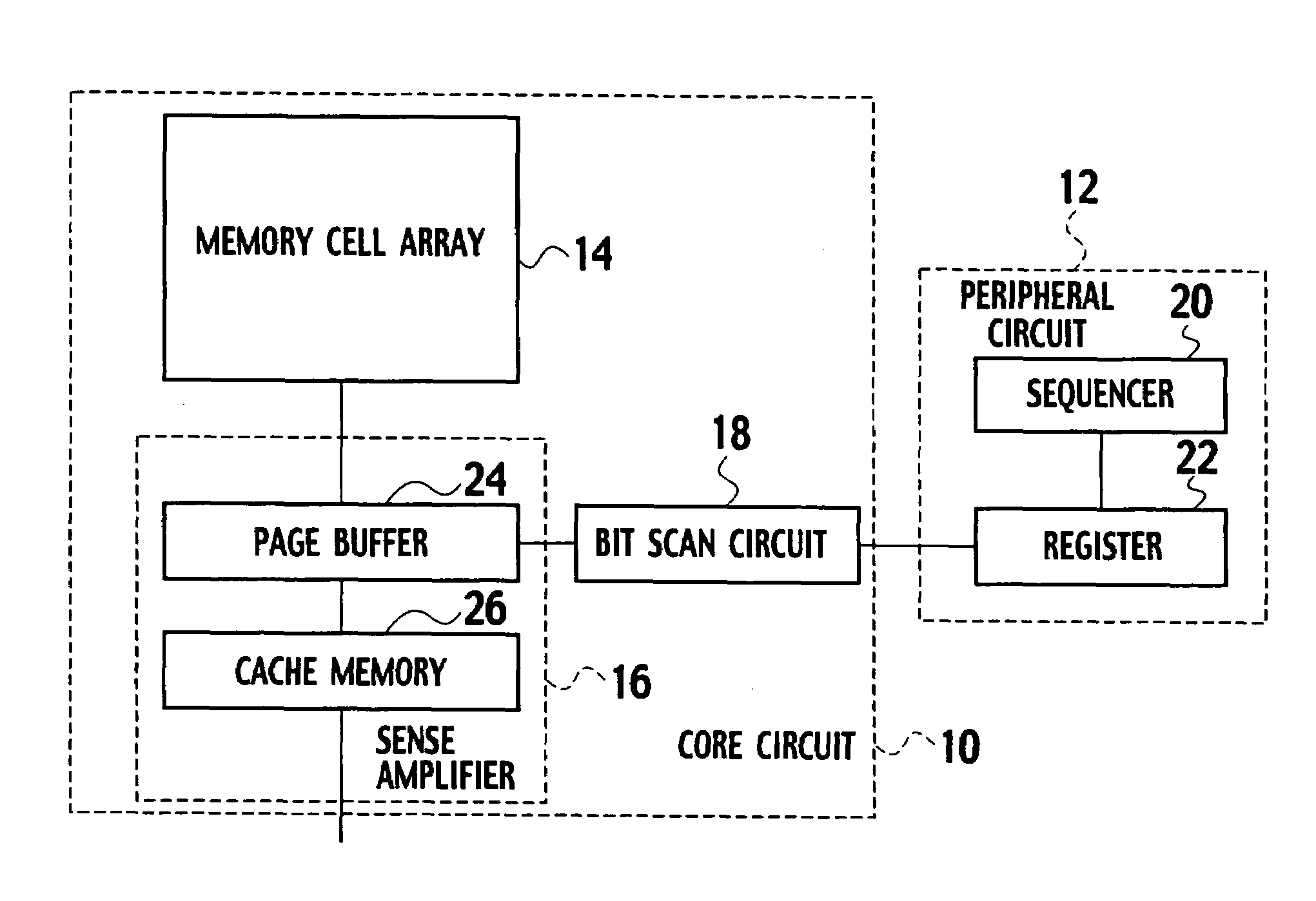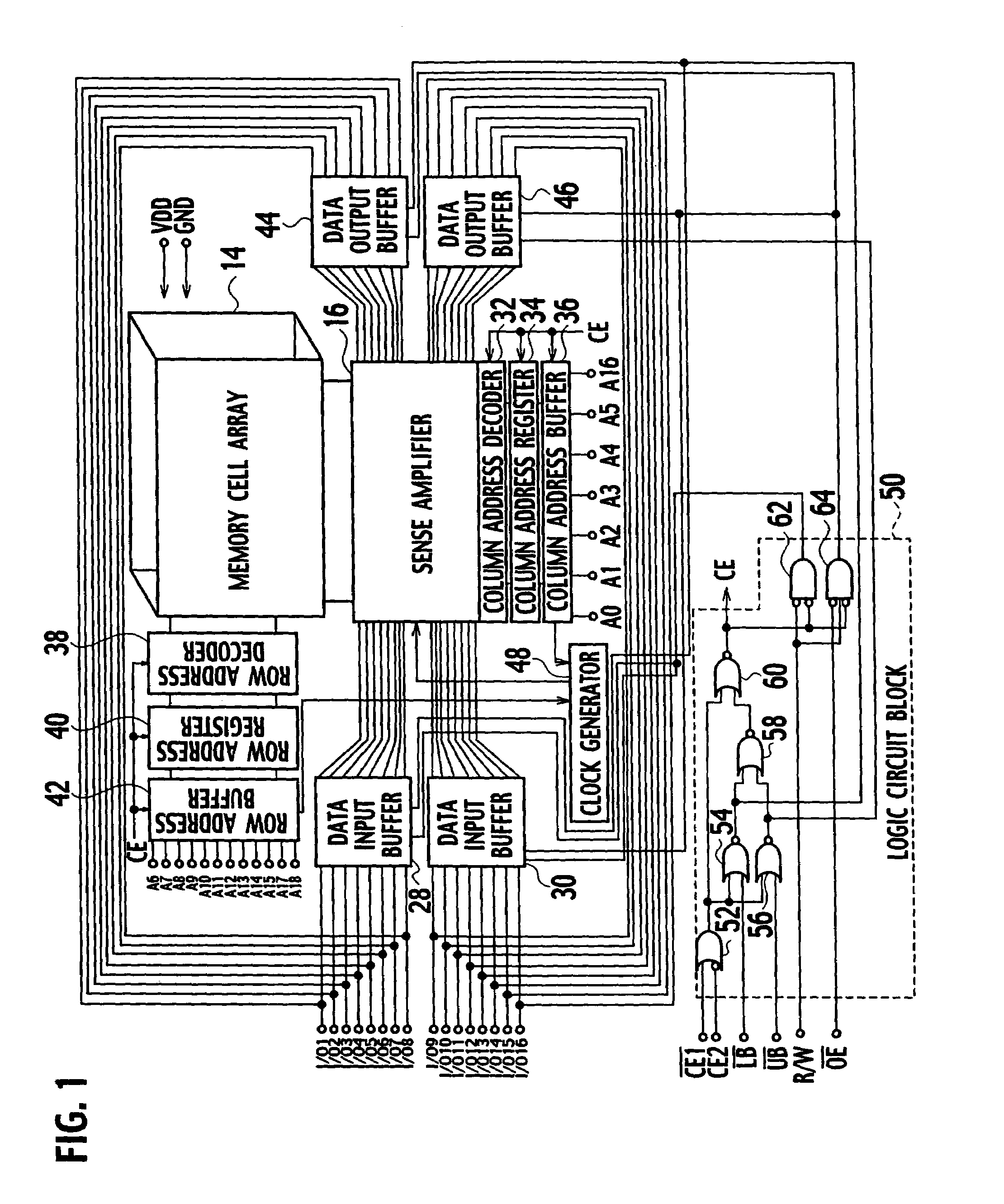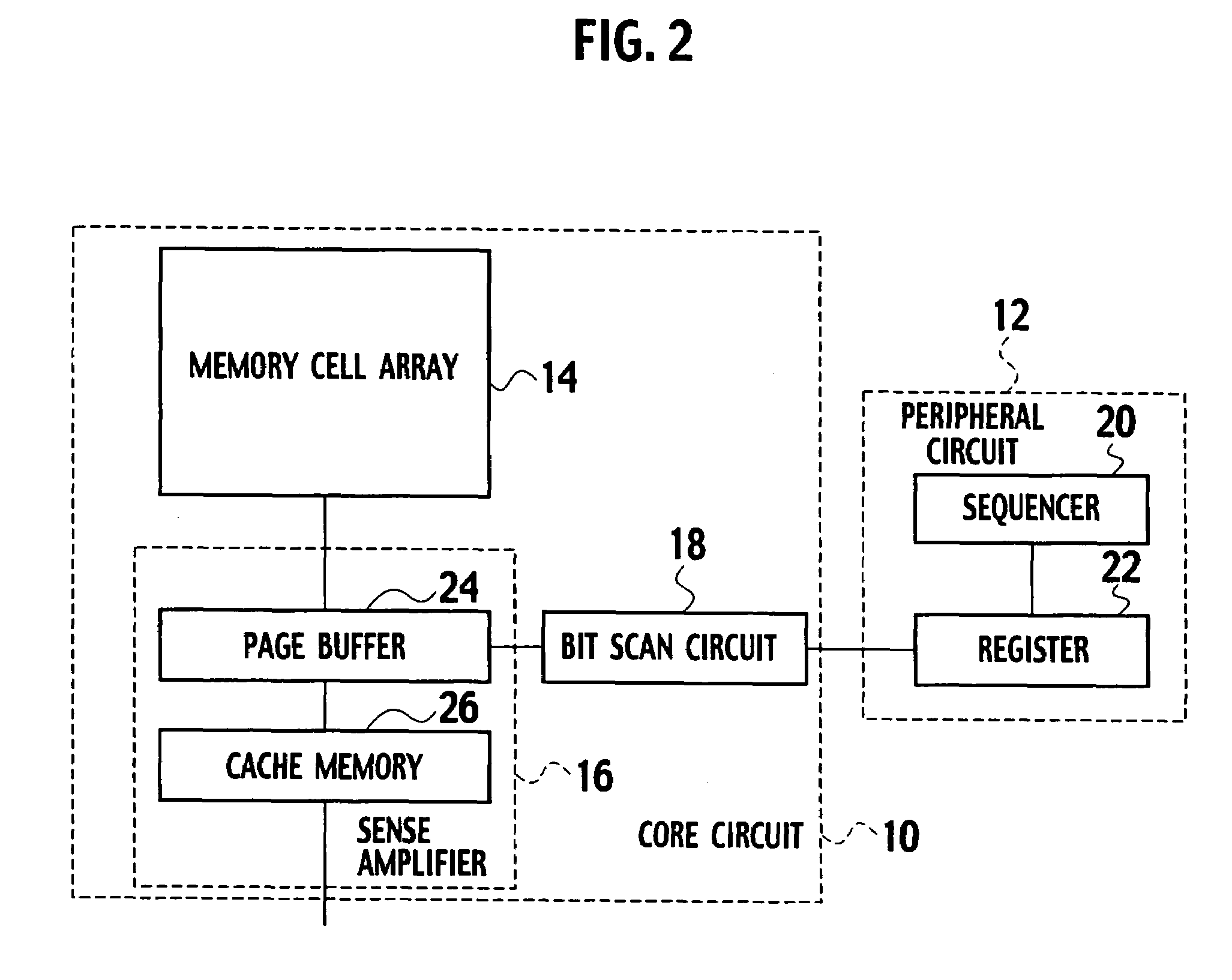Nonvolatile semiconductor memory, a data write-in method for the nonvolatile semiconductor memory and a memory card
a nonvolatile semiconductor and data write-in technology, applied in static storage, digital storage, instruments, etc., can solve the problems of program disturbance, program disturbance, and program disturbance in all pages
- Summary
- Abstract
- Description
- Claims
- Application Information
AI Technical Summary
Benefits of technology
Problems solved by technology
Method used
Image
Examples
first embodiment
[0035]In the following description, a primary specific number of bits is referred to as M1 bits, and a secondary specific number of bits is referred to as M2 bits. In general, there is a principal constraint of M12121 and M2 are arbitrary values, respectively. The larger the value, the more effectively the suppression of influence of a program disturbance. However, the value needs to be equal to or less than the number of fail bits to be ensured of correction when using ECC.
[0036]According to the embodiments of the present invention, a sequencer performs an important operation, such as carrying out bit scan during a write-in operation and terminating the write-in operation if the number of fail bits falls below a specific value. Such operation may be carried out independent of binary or multi-valued logic. In the case of a multi-valued logic, since distance between the threshold voltages is narrow, the multi-valued logic is easily influenced by a program disturbance in a write-in op...
study example
(Study Example)
[0049]A flowchart of FIG. 5 shows a data write-in method for a nonvolatile semiconductor memory, according to a study example for the embodiments of the present invention. Vpgm denotes a write-in voltage, and PC denotes a write-in loop execution count.
[0050]In step S1, the write-in voltage Vpgm is specified to be equal to a start voltage Vpgm—start, and the write-in loop execution count PC is initialized to 0.
[0051]Next, in step S2, the PC is incremented by one.
[0052]Next, in step S3, it is determined whether or not verification status result is pass.
[0053]If Yes in step S3, the process proceeds to step S5, and the status result is pass.
[0054]If No in step S3, the process proceeds to step S4 in which it is then determined whether or not the write-in loop execution count PC is less than the maximum value PC—max of the write-in loop execution count.
[0055]If No in step S4, the process proceeds to step S6, and the status result is fail.
[0056]If Yes in step S4, the process...
second embodiment
[0098]FIG. 13 is a flowchart describing a data write-in method for a nonvolatile semiconductor memory, according to the second embodiment of the present invention.
[0099]According to the first embodiment, bit ignoring parameters are specified based on the data write-in loop execution count. On the other hand, according to the second embodiment, Vpgmx=Vpgm—start+Vx (pgm—max) is given for the write-in start voltage (referred to as Vpgm—start). The loop runs ignoring M1 bit from the start of write-in operation until Vpgmx, and afterwards ignoring M2 bit until Vpgmmax. Bit ignoring parameters are specified in voltages such that the same advantages as those in the first embodiment are achieved.
[0100]According to the nonvolatile semiconductor memory of the second embodiment of the present invention, Loop—max2 is specified to be equal to a specified value Vpgmx which is the sum of the write-in start voltage Vpgm—start and an arbitrary fixed voltage Vx as a variable, and differs for respecti...
PUM
 Login to View More
Login to View More Abstract
Description
Claims
Application Information
 Login to View More
Login to View More - R&D
- Intellectual Property
- Life Sciences
- Materials
- Tech Scout
- Unparalleled Data Quality
- Higher Quality Content
- 60% Fewer Hallucinations
Browse by: Latest US Patents, China's latest patents, Technical Efficacy Thesaurus, Application Domain, Technology Topic, Popular Technical Reports.
© 2025 PatSnap. All rights reserved.Legal|Privacy policy|Modern Slavery Act Transparency Statement|Sitemap|About US| Contact US: help@patsnap.com



